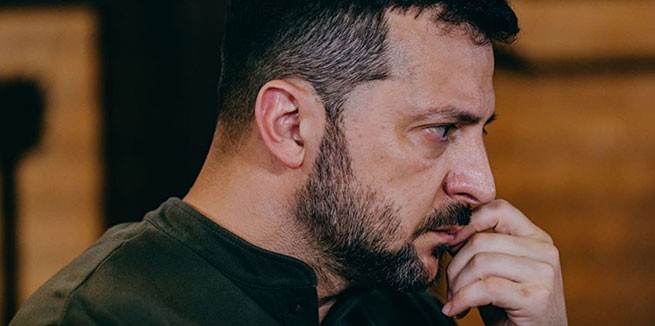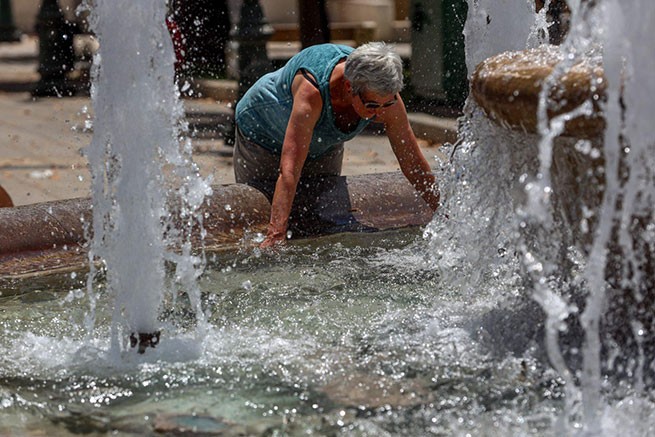Cetaceans (whales, dolphins, porpoises) that swim in European seas face a much greater threat than in all other parts of the planet. At the same time, Europe has one of the most advanced and integrated systems for their protection.
This paradox is described in a report called “Under Pressure,” recently released by OceanCare, an international organization for the protection of marine ecosystems. In the past, the seas were teeming with life, herds of many hundreds of dolphins were common, and they even found their place in ancient art. How did we move from this image to the grim reality of today, where even the common dolphin is endangered? Most importantly, where will we be in a few years if nothing changes?
Frescoes on the walls of the Palace of Knossos. O. Crete.
Some threats can be easily dealt with. Between 2010 and 2020, whalers in Norway, the Faroe Islands, Iceland and Greenland killed 52,966 cetaceans. Their meat is mainly exported to Japan, where domestic demand remains. Also, whale meat dishes are in demand among tourists, and their fat and bones have many uses, including turning into souvenirs. “There is no research to support any conditional stability of certain captures (killing cetaceans),” states OceanCare. The study suggests that severely limiting cetacean hunting is the simplest measure that can be taken to protect them.
Other threats are much more complex. The most valuable guide to the status of species and populations is compiled by the International Union for Conservation of Nature (IUCN). Scientists from various fields regularly assess the most accurate scientific evidence and classify species ranging from “least dangerous” to “extinct.” The IUCN Red List lists dozens of endangered cetacean species in Europe. While of the three populations and subpopulations that are just a step away from extinction (endangered), one lives in Greece. It is a short-billed dolphin (Delphinus delphis) in the Gulf of Corinth. Two other species that are in imminent danger of extinction in Europe are killer whales in the Strait of Gibraltar and porpoises (small cetaceans often confused with dolphins) in the Baltic Sea.
Different types of dolphins have different eating habits and behaviors. The Gulf of Corinth is a large body of water with a healthy population of approximately 1,300 striped dolphins (and another small mobile population of bottlenose dolphins). Nevertheless, only 22 individuals remained of the latter, since each species reacts differently to environmental pressure. To survive, they left their own shallow water habitat, where they used to feed on sardines and anchovies, which were depleted by overfishing. Now they are forced to live in deeper waters, where they join groups of striped dolphins and mate with them.
Each dolphin’s fin shape and body color are different, so if you spend enough time observing and photographing all the dolphins in the area, you can recognize them almost individually. Italian marine biologist Giovanni Bearzi did just that, devoting 21 years of his life to studying dolphins in Greece – first in the Ionian Sea and then in the Gulf of Corinth. Alarming are the models created by Bearzi, together with Nina Luisa Santostazi, an animal researcher at the University of Rome, La Sapienza, and Olivier Jimenez, a French animal demographer.
In their latest research paper (Santostasi et al. 2020 in the scientific journal Ecological Modeling), scientists predict that the chances of extinction of the common dolphin population in the Gulf of Corinth in the next 16 years are very high. Extinction could have occurred as a result of hybridization between striped and common dolphins. There are already twice as many hybrids as in other common dolphins. “Common dolphins are likely to disappear,” says Bearzi. “Hybrids are harmful to the species, and certainly not to the extent that they are in the Gulf of Corinth.”
This scientific prediction will come true “if nothing changes.” Bearzi notes with sadness that animals that adapt to humans survive, such as pigeons, rats, foxes or, in the case of dolphins, bottlenose dolphins, which can move into and out of the Gulf of Corinth, can feed on fish escaping from aquaculture facilities.
Following persistent efforts by the Pelagos Cetacean Research Institute and other organizations, the Gulf of Corinth was declared a Natura 2000 protected area in 2018, but overfishing by trawlers and purse seiners has not stopped. Institute director Alexandros Francis notes that, in addition to the common dolphins in the Gulf of Corinth, other endangered cetaceans in Greek waters include sperm whales in the Greek Basin and porpoises in the Thracian Sea.
More recently, the Greek state finally realized the problem of collision of sperm whales with ships, but did not take the necessary steps to solve this problem. One is directing ships away from areas where these large cetaceans live. Another safeguard could be to reduce man-made noise by reducing the speed of ships, as detailed in the OceanCare report. In any case, the measures should be real, not purely theoretical. As Bearzi notes, “the protection must be such that the dolphins can see.” They are intelligent animals and are not easily deceived.






More Stories
Weather: hot and windy weekend
Blue Flag: 22 Greek beaches stripped of honorary label
What Are Cruise Ships Worth for the Planet (Video)